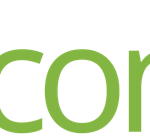Social Media Marketing: Win Friends and Influence Fans and Followers
On a scale of 1 to 10, how comfortable are you using social media to create buzz around your brand? Put another way, do you twitch at the thought of tweeting? Is your idea of a social network limited to your PTA and HOA?
Maybe you’re further along the continuum, pinning, posting and blogging away, and just want to know what to do next. This article aims to bring you along from 1 to 10 and beyond.
Millions of people are clicking every day. Unlike traditional media choices like television, print advertising and public relations, often off limits for average companies, a social media strategy can be started with a small investment.
There’s simply no getting around it. Your customers live online. You need to join them and take the opportunity to get closer. Here are just a few of the benefits:
- Reach people in an authentic way
- Drive more qualified visitors to your site
- Increase visibility for your brand
- Engage thought leaders who influence your customers’ behavior
- Collect data needed for future business decisions
Social platforms make companies accessible to their fans and visible to those who are curious about them. The opportunity to gather a group of people already interested in your business is invaluable. You can interact with customers all over the world and they can talk back. Responses to problems can happen instantly. This keeps customers coming back and staying longer. When loyalists become advocates and start sharing (via their own networks), the results are remarkable.
By providing a spot for your community to exchange ideas, you’re also building authority for your brand within your industry. Customers will turn to you for solutions and resources, services that don’t necessarily go to your bottom line. This concept is known as providing added value. If you sell sporting goods it might be good to post reviews of national parks or tips for hiking the Appalachian Trail. The greater the value-added content, the greater the ranking on Google search.
So where are you in the process?
 If you are a beginner, the best way to get started is to open accounts on Pinterest, LinkedIn, Google+, Facebook, Twitter and Instagram and see what all the fuss is about. Start learning how to use the platforms on a personal basis. See what type of information is being shared and how that might translate to what you sell. When you’re comfortable you can open accounts for your business.
If you are a beginner, the best way to get started is to open accounts on Pinterest, LinkedIn, Google+, Facebook, Twitter and Instagram and see what all the fuss is about. Start learning how to use the platforms on a personal basis. See what type of information is being shared and how that might translate to what you sell. When you’re comfortable you can open accounts for your business.
Blogs Are Your Building Blocks
Social media is the portal through which potential customers find entry to your website. Having interesting, unusual, valuable content in the form of relevant blogs has many advantages, not the least of which is establishing credibility as a leader and authority in the community.
Link Back to Blog Posts
 Once you have your blogs in place, you’ve got something of non-commercial value to promote. Extract a few words and images from these articles as snippets to tout on your social media. These act as teasers to more valuable content on your site such as how-to articles, product demonstrations and industry news. All of this is done by inserting links back to your blog, landing page or product descriptions.
Once you have your blogs in place, you’ve got something of non-commercial value to promote. Extract a few words and images from these articles as snippets to tout on your social media. These act as teasers to more valuable content on your site such as how-to articles, product demonstrations and industry news. All of this is done by inserting links back to your blog, landing page or product descriptions.
For example, if you pin a ritzy 1940’s photo on your board in Pinterest with the caption Vintage Snakeskin Suitcase, you can include a link to your luggage website and specifically the section of exotic carryons. Anyone who is “following” you on Pinterest (because you’ve been pinning really cool pictures) will associate your good taste and expertise with your business quality and reputation.
Make a Social Media Calendar
 Now that you know which social media outlets could be of use to you, decide what messages you want to communicate–this is your social media content strategy. Maybe you want to cover your annual conference in January, introduce a new product in February, offer how-to tips in March, etc. On a spreadsheet chart out the topic, type of content (photo, text, video, link) and desired action (sign up for free trial, request eBook). Leave spaces for the wording, links etc. to go on each social media. Specifications vary slightly: Facebook and Instagram can have 3-4 lines whereas Pinterest is just a simple description.
Now that you know which social media outlets could be of use to you, decide what messages you want to communicate–this is your social media content strategy. Maybe you want to cover your annual conference in January, introduce a new product in February, offer how-to tips in March, etc. On a spreadsheet chart out the topic, type of content (photo, text, video, link) and desired action (sign up for free trial, request eBook). Leave spaces for the wording, links etc. to go on each social media. Specifications vary slightly: Facebook and Instagram can have 3-4 lines whereas Pinterest is just a simple description.
This calendar will do wonders for your consistency. If your efforts grow too overwhelming you can enlist a social media scheduler to make sure everything gets posted on time in the right place with the correct format.
Tweet Like The Donald
 If he can, you can. Short messages or “tweets” limited to 140 characters appear on your followers’ timelines. In addition to text, tweets can contain images, videos or, most importantly, links to your website.
If he can, you can. Short messages or “tweets” limited to 140 characters appear on your followers’ timelines. In addition to text, tweets can contain images, videos or, most importantly, links to your website.
Users place a hashtag, the pound or number sign (#), in front of a word or un-spaced phrase to create a searchable term. Anyone searching for #americascup2013, for example, will receive a list of tweets from around the globe about the international sailing event.
Take Advantage of Analytics
 It’s important to track the number of visitors, lead conversions and purchases resulting from each social channel. Google Analytics is a free tool that monitors the behavior, demographics, type of device used, etc. of people clicking through from social networks. It’s the best way to determine where to focus your efforts going forward.
It’s important to track the number of visitors, lead conversions and purchases resulting from each social channel. Google Analytics is a free tool that monitors the behavior, demographics, type of device used, etc. of people clicking through from social networks. It’s the best way to determine where to focus your efforts going forward.
By now you must agree: social media marketing can be your new best friend, albeit a somewhat mysterious one. Whether you’re a dabbler or a complete devotee, there’s always something fascinating to learn. But diving in without the aid of a professional can be overwhelming.
That’s where we come in. Building a network that provides real return on investment requires guidance from those who have gone before. Contact us and let’s talk about a social media marketing strategy that will win friends and influence followers and fans.






